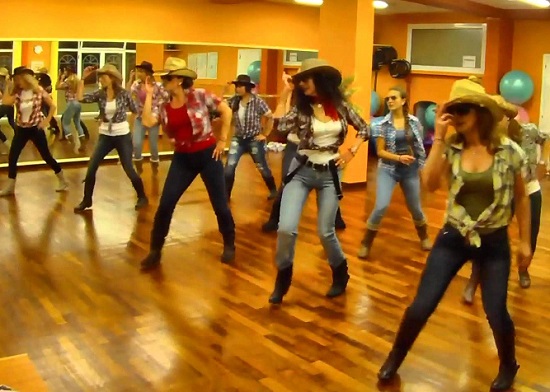Social dancing couples often joke about line dancing, e.g., “Line Dancing: See what happens when cousins breed”. But its virtues include steps that are much easier to execute than most of couples ballroom dance steps and the repetition of series of steps. Another important reason for its popularity is that no partner is needed, which lessens both the social pressure of coupling up and the need to coordinate movements with one’s partner. It is especially popular among women, because it takes men at least four times to learn to dance, so many men are reluctant to “reveal their two left feet”. This lets women dance and men watch or at least removes the pressure on the man to do a good job of leading (which includes thinking ahead about the next figure, and skillfully guiding the woman to do it).
Given its virtues, it is surprising that line dancing is a relatively new phenomenon. On the San Francisco peninsula, many of the dinner-dances attended by Wilddancer always include Elvira … perhaps because it is one of the older line dances (dating from 1981), and is relatively simple and with a slow tempo, so the mostly-ballroom dancers can master it quickly. Strangely, given its longevity and simplicity, it is not popular on YouTube, with the most-viewed demonstration (by Suzy Hazard)
having fewer than 48,000 views, whereas the 1980 Tush Push has nearly 3.7 million views and the 1989 Electric Slide has nearly 1.3 million views.

